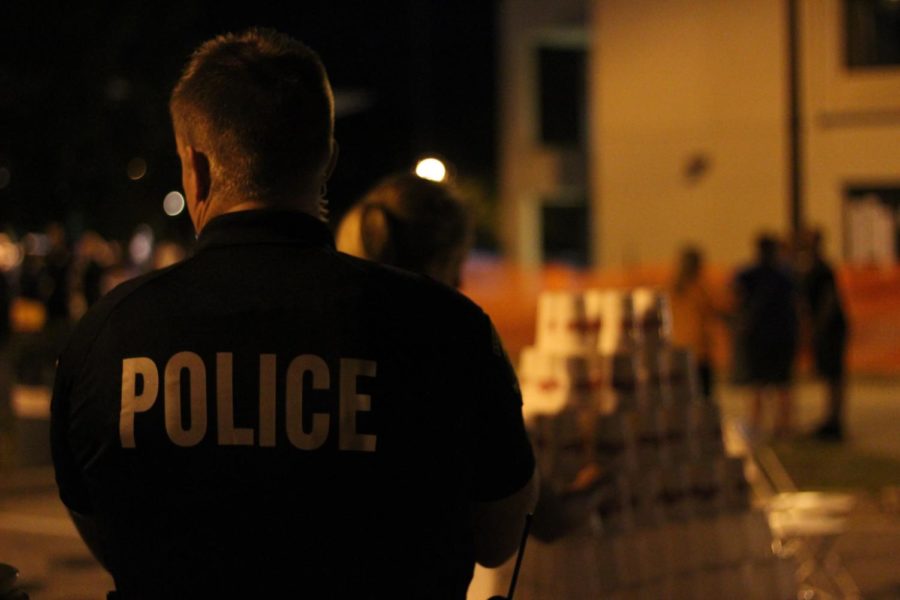Professor gives lecture on criminal justice
Ian Steenhoek / Iowa State Daily
The Ames Police had a presence at the after party to ensure everyone’s safety. Here an officer is overseeing the construction of “The Beeramid.”
September 11, 2017
An Iowa State professor found that 5 to 10 percent of offenders commit half the crimes and account for 60 to 100 percent of the most severe crimes.
Professor Matthew DeLisi, of the sociology department, shared his work, experience and compilations of data on Monday at 8 p.m. in the Sun Room of the Memorial Union in a lecture on the criminal justice system.
The severe 5 percent refers to a group of pathological criminals who commit the most violent crimes.
DeLisi started by pointing out that whether the system is successful or not, it depends on what parts you are talking about and what criminals you are dealing with. The criminal population is extremely diverse.
“I think they’ll be surprised both in terms of how large the pro social or non criminal population is, and so it’s sort of comforting news, and I think some of them might be shocked at how pathological the more severe offenders are,” DeLisi said before the lecture.
Based on arrests, 65 percent of the population does not engage in criminal activity, 35 percent engage in minor offenses, while the other 5 percent are violent, habitual offenders. These findings are roughly the same in dozens of nations spanning six continents.
A study done in New Zealand, following a birth cohort with around 1,000 people, found that characteristics from a person at age 3 were prognostic for behavioral outcomes later in life.
Delisi said the lecture is important in helping people understand it is not necessarily the criminal justice system at fault when we see these habitual offenders.
Consistently found among the 5 percent is adverse childhood experiences, like abuse or neglect.
Along with this, antisocial personality disorder, psychopathy, homicidal ideation, paraphiliac disorders and self regulation are also commonly found.
“Not all of these conditions are as pathological or as forensic as they might seem. Good old self control or self regulation, which everyone has a conceptualization of, is a very powerful predictor of anti social behavior,” explained DeLisi.
Two thirds of the population is law abiding simply because of the existence of our criminal justice system.
Police often judge whether they can take action to correct behavior without getting someone officially involved in the system, referred to as under-enforcement of the law. The reduction of criminal charges is another tactic used by law enforcement to help people stay out of the system.
“Many times that’s good because that might be the one time that they’re arrested, but for other offenders those reductions might not be good because they might be one of those severe 5 percent individuals,” DeLisi said.
As for rehabilitation, the majority of the severe 5 percent do not want it. They feel more comfortable in prison, often times choosing incarceration over parole. These individuals are the greatest threat to public safety because of their involvement in the most serious forms of crime.
DeLisi ended the lecture with one final thought about the criminal justice system. It is not perfect, he said, but when someone is arrested multiple times, is it the system at fault or rather the offender’s own behavior?







